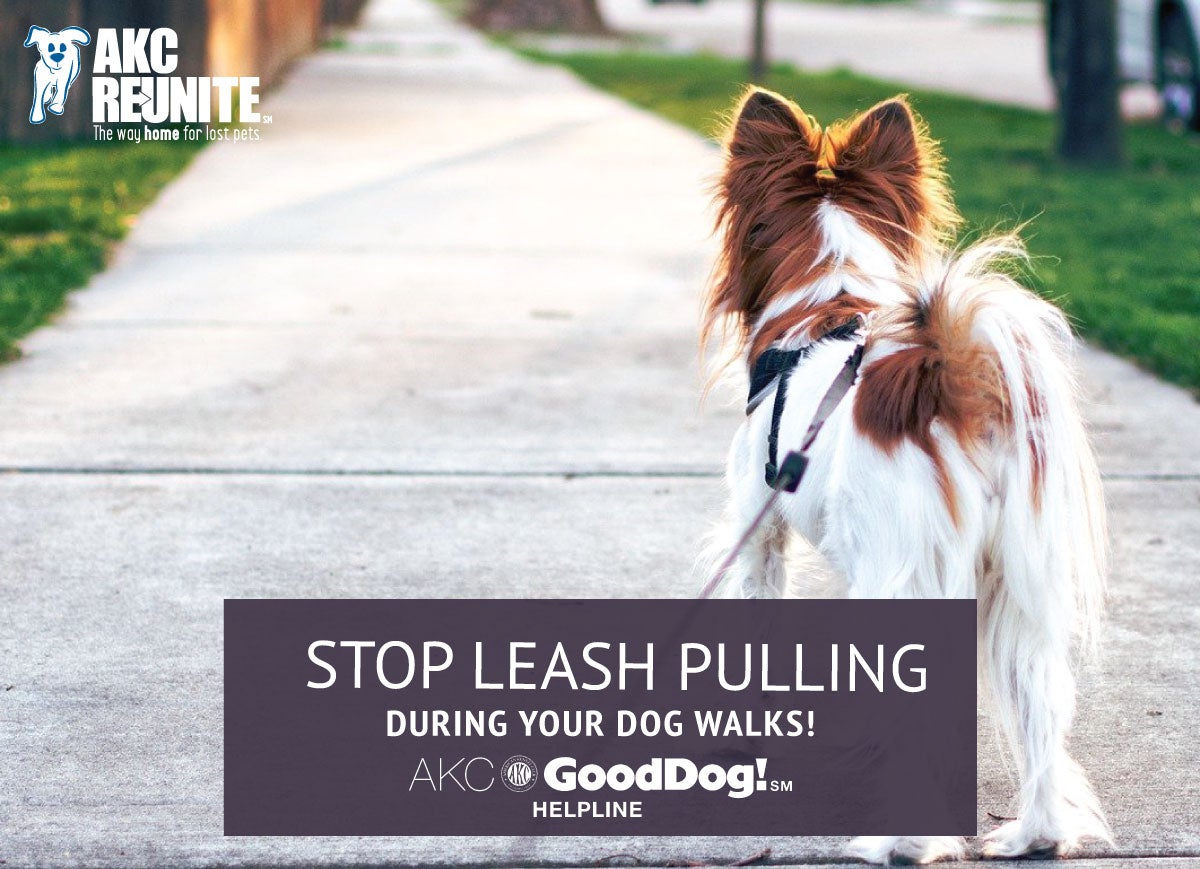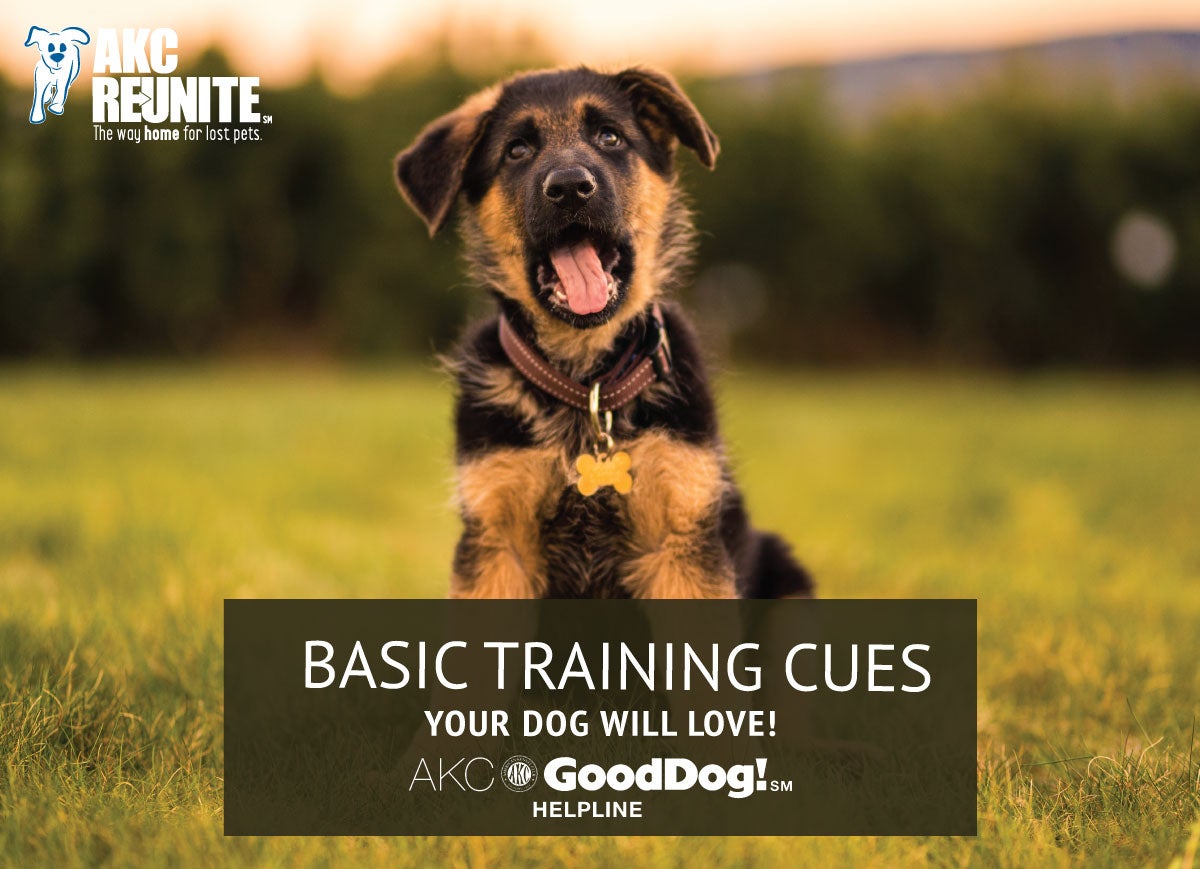Stop the Leash Pulling on Walks!
Brought to you by the AKC GoodDog! Helpline – the AKC’s 7-day-a-week training support service
By: Hilarie Erb
Does your dog’s relentless tugging make it impossible to enjoy a walk? Poor leash manners are one of the most common issues that AKC GoodDog Helpline trainers are asked about. Walking on a leash is not really natural to dogs, so they need to be trained in how to do it. But don’t despair; there are ways you can make it better.
A Little Exercise Before Getting Started
If your pup is excited about the impending walk and is full of pent-up energy, try a 10-minute game of tug or fetch in the house or fenced yard first. This can help to take the edge off. Any of these indoor games are a good start, and they will help your dog to remember that being near you is fun!
Equipment
What type of leash, collar, or harness are you using? Training is crucial, but the right equipment can make all the difference. Harnesses are popular, but most of them, to which the leash attaches at the dog’s back, actually encourage tugging. Front-hook harnesses can be more helpful for reducing tugging since the leash attaches at the front of the dog’s chest, making tugging uncomfortable. For serious tuggers, head collars are lifesavers.
Many dogs will do fine with a well-fitted flat buckle collar or martingale collar, but if your dog or puppy is a tugger, give one of these options a try!
A Few Tricks Up Your Sleeve
When your dog tugs, make no forward motion! Stop moving the moment there is no slack in the leash. Since the dog wants to move forward, being allowed to do so can be a reward for not tugging.
If the tugging persists, surprise your dog with quick direction changes by cheerfully saying “Whoops, this way!” and switching directions several times in a row. Make it a game, with rewards thrown in. Doing this may not get you far distance-wise, but think of all the extra steps you’ll be getting.
Rewards
Speaking of rewards, take time to be engaging with your dog on your walk! You need to interact with your dog, both verbally and with rewards, like high value treats. Take time to reward your dog for walking nicely with you and when the environment is boring, ordinary treats will do. However, when out in the big exciting world, consider stronger treats that will make paying attention to you more interesting than tugging to get to those great-smelling bushes. Real meat, chicken, or cheese (though nothing spicy or greasy) are good things to try.
Where the rewards happen matters! It should always be close to you, at your leg – because that is where you want the dog to be. Do not encourage your dog to meet other people or dogs if you don’t want tugging.
And consider breaking up the walk into shorter segments because walking for a long time with no attention, is boring to a dog. Rather than taking a 30-minute walk, practice back-and-forth for 10 minutes in front of your home or in the driveway. And be sure to praise and reward your dog frequently for doing the right thing on your walks — maybe even allowing a sniff break.
Be Patient
Remember, your dog isn’t trying to be the boss. Most dogs have a faster “cruising” gait than even the fittest and fastest humans. They prefer to trot as opposed to walk. If you try jogging even a bit, you’ll probably find that your dog is comfortably trotting at your side, not trying to gallop even faster. But most of us would rather walk, and dogs can learn to match our speed.
Good leash manners don’t happen overnight. Work with your dog in several short lessons each day and add distractions slowly as you see improvement. Soon you and your best friend will be enjoying outings around the neighborhood!
For more tips and advice on training your dog, join the AKC GoodDog! Helpline, a seven-day-a-week telephone support service staffed by experienced dog trainers: www.akcgooddoghelpline.org.
RELATED POSTS
Thunderstorm Terror and Helping Your Dog Cope
April showers might come with thunder, and while most dogs aren’t fazed by it, some are very afraid.
Stop the Leash Pulling on Walks
Does your dog’s relentless tugging make it impossible to enjoy a walk? Poor leash manners are one of the most common issues that AKC GoodDog Helpline trainers are asked about. But don’t despair; there are ways you can make it better.
Basic Training Cues Your Dog Will Love
A good relationship with your puppy doesn’t just happen overnight, but it’s easy to build one with simple cues and positive reinforcement training!





